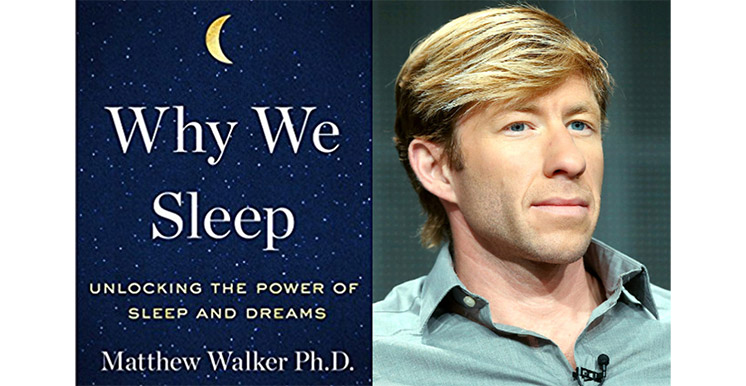What’s it about?
Why We Sleep
reveals the critical role sleep plays in our health, learning, memory, and overall well-being. Neuroscientist Matthew Walker explains the science of sleep cycles, dreams, and circadian rhythms, showing how proper rest can boost creativity, immunity, and emotional resilience—while chronic sleep deprivation can harm the brain and body. The book blends research with practical advice, making a compelling case for prioritizing quality sleep in modern life.
Book Review: Why We Sleep

by Matthew Walker
Published: October 3, 2017
Review published: September 4, 2025
What I Learned / My Take
1. Night owls often inherit their circadian timing from parents.
2. People’s circadian rhythms differ; not everyone follows the same sleep pattern.
3. Poor sleep is linked to higher risks of depression, anxiety, diabetes, cancer, heart attack, and stroke.
4. If you need an alarm clock to wake up, you’re not giving yourself enough sleep.
5. Sleep quality may matter as much as quantity.
6. Sleep needs across species depend on multiple factors: diet type (omnivore, herbivore, carnivore) and sleep architecture.
7. Sleep architecture includes wake, REM, NREM stages 1–4.
8. Humans need more than 7 hours nightly; performance fails after ~16 hours awake.
9. Humans sleep less than other primates (8 vs. 10–15 hours).
10. Developmental shift: more REM sleep early in life; more deep NREM sleep in adolescence.
11. Adults over 45 sleeping <6 hours are 200% more likely to suffer heart attack or stroke.
12. Lack of sleep weakens immunity — fewer hours mean higher infection rates (e.g., 5 hours = ~50% risk of cold).
13. REM sleep helps heal emotional wounds.
14. Depression isn’t only negative feelings; it’s also anhedonia (loss of positive feelings).
15. Screens and blue light (e.g., iPads) suppress melatonin, delaying sleep onset.
16. Sleep hygiene tips: reduce caffeine/alcohol, remove screens, keep bedroom cool.
Scenes and Images that Stuck with Me:
- Dolphins and whales sleeping with half a brain awake so they can swim and breathe—unihemispheric sleep that keeps them alive.
- Birds keeping one eye open while half their brain rests, staying alert to predators while still getting needed sleep.
- The image of humans in the womb immersed in REM sleep, then shifting to deep NREM in adolescence.
- The “recycle rate”: after 16 hours awake, the brain begins to break down—a vivid reminder of our limits.
- 90% of Americans glowing in the dark, scrolling phones or tablets before bed, disrupting their natural rhythms.
- Freud’s dream theories contrasted with modern views—dreams as unfulfilled wishes or as reflections of not having enough time.
Would I recommend it?
Definitely—for anyone curious about sleep, health, or performance. This book reshaped how I think about rest and convinced me that sleep isn’t optional but a foundation of well-being.